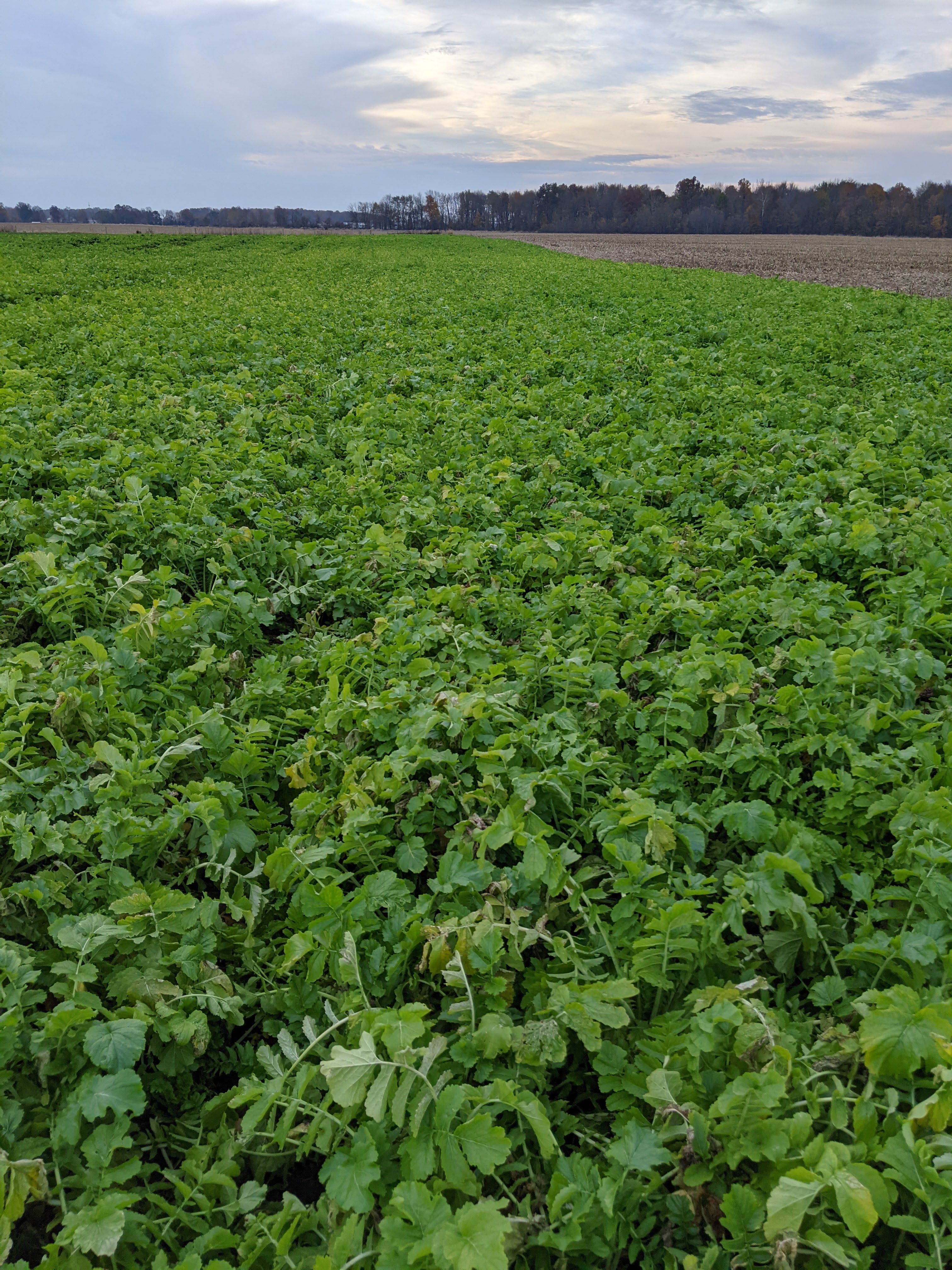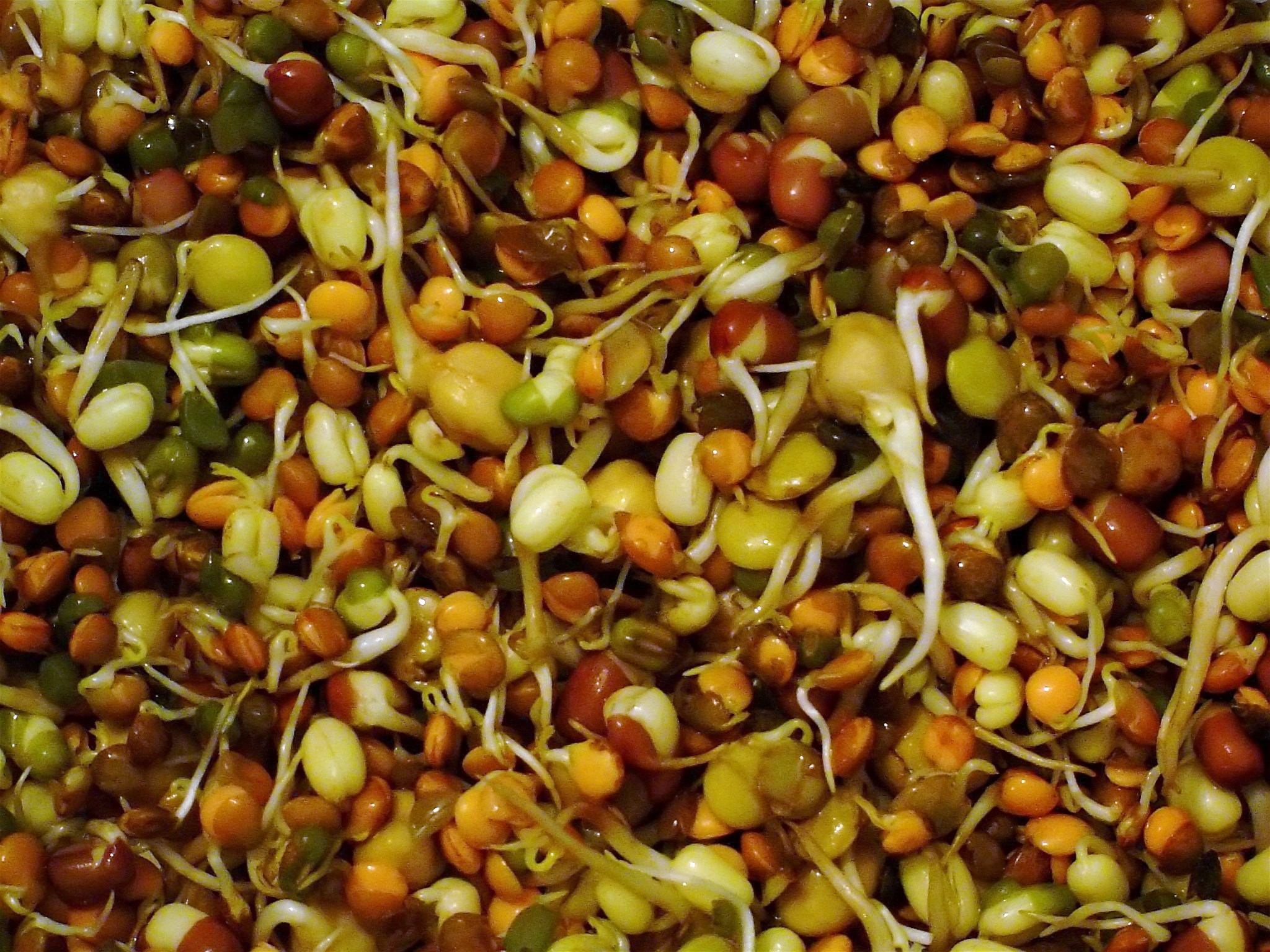|
Radish
The radish (''Raphanus sativus'') is a flowering plant in the mustard family, Brassicaceae. Its large taproot is commonly used as a root vegetable, although the entire plant is edible and its leaves are sometimes used as a leaf vegetable. Originally domesticated in Asia, radishes are now grown and consumed globally. The radish is sometimes considered to form a species complex with the wild radish, and instead given the trinomial name ''Raphanus raphanistrum'' subsp. ''sativus''. Radishes are often used raw as a crunchy salad vegetable with a pungent, slightly spicy flavor, varying in intensity depending on its growing environment. There are numerous varieties varying in size, flavor, color, and length of time they take to mature. Radishes owe their sharp flavor to the various chemical compounds produced by the plants, including glucosinolate, myrosinase, and isothiocyanate. They are sometimes grown as companion plants and suffer from few pests and diseases. They germinate q ... [...More Info...] [...Related Items...] OR: [Wikipedia] [Google] [Baidu] |
Daikon
Daikon 大根 (だいこん) or mooli, (مولی) ''Raphanus sativus'' var. ''longipinnatus,'' is a mild-flavored winter radish usually characterized by fast-growing leaves and a long, white, root. Originally native to continental East Asia, daikon is harvested and consumed throughout the region, as well as in South Asia, and is available internationally. In some locations, daikon is planted for its ability to break up compacted soils and recover nutrients and is not harvested. Names In culinary contexts, ''daikon'' () or are the most common names in all forms of English. Historical ties to South Asia permit ''mooli'' () as a general synonym in English. The generic terms white radish, winter radish, Oriental radish, long white radish, and other terms are also used. Other synonyms usually vary by region or describe regional varieties of the vegetable. When it is necessary to distinguish the usual Japanese form from others, it is sometimes known as Japanese radish.Rober ... [...More Info...] [...Related Items...] OR: [Wikipedia] [Google] [Baidu] |
Cover Crop
In agriculture, cover crops are plants that are planted to ground cover, cover the soil rather than for the purpose of being harvested. Cover crops manage soil erosion, soil fertility, soil quality, water, weeds, Pest (organism), pests, diseases, biodiversity and wildlife in an agroecology, agroecosysteman ecological system managed and shaped by humans. Cover crops can increase Soil microbiology, microbial activity in the soil, which has a positive effect on Nitrogen fixation, nitrogen availability, Plant nutrition, nitrogen uptake in Cash crop, target crops, and Crop yield, crop yields. Cover crops reduce water pollution risks and remove CO2 from the atmosphere. Cover crops may be an off-season crop planted after harvesting the cash crop. Cover crops are nurse crops in that they increase the survival of the main crop being harvested, and are often grown over the winter. In the United States, cover cropping may cost as much as $35 per acre. Soil erosion Although cover crops can ... [...More Info...] [...Related Items...] OR: [Wikipedia] [Google] [Baidu] |
Radish (other)
Radish usually refers to the common radish, a summer radish with a round red root. It may also refer to: * Daikon, the long-rooted East Asian white radish * Other species and varieties of the genus ''Raphanus ''Raphanus'' (Latin for "radish") is a genus within the flowering plant family Brassicaceae. Carl Linnaeus described three species within the genus: the cultivated radish (''Raphanus sativus''), the wild radish or jointed charlock (''Raphanus ra ...'' * Radish (band), a Texan sugar metal band {{disambiguation ... [...More Info...] [...Related Items...] OR: [Wikipedia] [Google] [Baidu] |
Raphanus Raphanistrum
''Raphanus raphanistrum'', also known as wild radish, white charlock or jointed charlock, is a flowering plant in the family Brassicaceae. The species is native to western Asia, Europe and parts of Northern Africa. It has been introduced into most parts of the world and is regarded as a habitat threatening invasive species in many areas, for example, Australia. It spreads rapidly and is often found growing on roadsides or in other places where the ground has been disturbed. The cultivated radish, widely used as a root vegetable, is sometimes considered to be one of its subspecies as ''Raphanus raphanistrum'' subsp. ''sativus''. Description Wild radish is an annual that grows up to 75 cm tall, variously branched to multi-stemmed, with a distinct slender taproot which does not swell like that of the cultivated radish. The stems are green and sometimes purple at the base and nodes, round in cross section and slightly ridged, and bristly-hairy all over. It has a basal rosette of pi ... [...More Info...] [...Related Items...] OR: [Wikipedia] [Google] [Baidu] |
Raphanus
''Raphanus'' (Latin for "radish") is a genus within the flowering plant family Brassicaceae. Carl Linnaeus described three species within the genus: the cultivated radish (''Raphanus sativus''), the wild radish or jointed charlock (''Raphanus raphanistrum''), and the rat-tail radish (''Raphanus caudatus''). Various other species have been proposed (particularly related to the East Asian daikon varieties) and the rat-tail radish is sometimes considered a variety of ''R. sativus'', but no clear consensus has emerged. ''Raphanus'' species grow as annual plant, annual or biennial plants, with a taproot which is much enlarged in the cultivated radish. Unlike many other genera in the family Brassicaceae, ''Raphanus'' has indehiscent fruit that do not split open at maturity to reveal the seeds. The genus is native to Asia, but its members can now be found worldwide. Growing wild, they are regarded as invasive species in many regions. ''Raphanus'' species are used as food plants by the ... [...More Info...] [...Related Items...] OR: [Wikipedia] [Google] [Baidu] |
Taproot
A taproot is a large, central, and dominant root from which other roots sprout laterally. Typically a taproot is somewhat straight and very thick, is tapering in shape, and grows directly downward. In some plants, such as the carrot, the taproot is a storage organ so well developed that it has been cultivated as a vegetable. The taproot system contrasts with the adventitious- or fibrous-root system of plants with many branched roots, but many plants that grow a taproot during germination go on to develop branching root structures, although some that rely on the main root for storage may retain the dominant taproot for centuries—for example, ''Welwitschia''. Description Dicots, one of the two divisions of flowering plants (angiosperms), start with a taproot, which is one main root forming from the enlarging radicle of the seed. The tap root can be persistent throughout the life of the plant but is most often replaced later in the plant's development by a fibrous root system. ... [...More Info...] [...Related Items...] OR: [Wikipedia] [Google] [Baidu] |
Root Vegetable
Root vegetables are underground plant parts eaten by humans or animals as food. In agricultural and culinary terminology, the term applies to true roots, such as taproots and root tubers, as well as non-roots such as bulbs, corms, rhizomes, and stem tubers. Potatoes are technically not roots, and sweet potatoes are a type of root called tuberous roots. Description Root vegetables are generally storage organs, enlarged to store energy in the form of carbohydrates. They differ in the concentration and balance of starches, sugars, and other carbohydrates. List of root vegetables The following list classifies root vegetables organized by their roots' anatomy. Modified plant stem * Corm **'' Amorphophallus konjac'' (konjac) ** ''Colocasia esculenta'' (taro) ** ''Eleocharis dulcis'' (Chinese water chestnut) ** ''Ensete'' spp. (enset) ** '' Nymphaea'' spp. (waterlily) ** '' Pteridium esculentum'' ** ''Sagittaria'' spp. (arrowhead or wapatoo) ** ''Typha spp. ** '' Xanthosoma'' ... [...More Info...] [...Related Items...] OR: [Wikipedia] [Google] [Baidu] |
Catch Crop
In agriculture, a catch crop is a fast-growing crop that is grown between successive plantings of a main crop. It is a specific type of cover crop that is grown between two main crops. This crop is utilized as a way to reduce nitrogen leaching but it also promotes environmental benefits such as fortifying soil structure, retention of water and enhancement of soil biological activity. Catch crops revolve around plant species that have short growing seasons, rapid growth, low soil and nutrients requirements to be considered a catch crop. Catch cropping is a type of succession planting. It makes more efficient use of growing space. For example, radishes that mature from seed in 25–30 days can be grown between rows of most vegetables, and harvested long before the main crop matures. Or, a catch crop can be planted between the spring harvest and fall planting of some crops. Leach reduction Growing catch crops is to improve and help maintain soil organic matter. This is achieved ... [...More Info...] [...Related Items...] OR: [Wikipedia] [Google] [Baidu] |
Companion Plant
Companion planting in gardening and agriculture is the planting of different crops in proximity for any of a number of different reasons, including weed suppression, pest control, pollination, providing habitat for beneficial insects, maximizing use of space, and to otherwise increase crop productivity. Companion planting is a form of polyculture. Companion planting is used by farmers and gardeners in both industrialized and developing countries for many reasons. Many of the modern principles of companion planting were present many centuries ago in forest gardens in Asia, and thousands of years ago in Mesoamerica. The technique may allow farmers to reduce costly inputs of artificial fertilisers and pesticides. Traditional practice History Companion planting was practiced in various forms by the indigenous peoples of the Americas prior to the arrival of Europeans. These peoples domesticated squash 8,000 to 10,000 years ago, then maize, then common beans, forming the ... [...More Info...] [...Related Items...] OR: [Wikipedia] [Google] [Baidu] |
Sprouting
Sprouting is the natural process by which seeds or spores germination, germinate and put out Shoot (botany), shoots, and already established plants produce new leaves or buds, or other Plant development#Adventitious structures, structures experience further growth. In the field of nutrition, the term signifies the practice of germinating seeds (for example, mung beans or sunflower seeds) to be eaten Raw food, raw or Cooking, cooked, which is considered more nutritious. Suitable seeds All viable seeds can be sprouted, but some sprouts, such as kidney beans, should not be eaten raw. Bean sprouts are a common ingredient across the world. They are particularly common in East Asian cuisine, Eastern Asian cuisine. It typically takes one week for them to become fully grown. The sprouted beans are more nutritious than the original beans, and they require much less cooking time. There are two common types of bean sprouts: * Mung bean sprouts, made from greenish-capped mung beans ... [...More Info...] [...Related Items...] OR: [Wikipedia] [Google] [Baidu] |
Forage
Forage is a plant material (mainly plant leaves and stems) eaten by grazing livestock. Historically, the term ''forage'' has meant only plants eaten by the animals directly as pasture, crop residue, or immature cereal crops, but it is also used more loosely to include similar plants cut for fodder and carried to the animals, especially as hay or silage. While the term ''forage'' has a broad definition, the term ''forage crop'' is used to define crops, annual or biennial, which are grown to be utilized by grazing or harvesting as a whole crop. Common forages Grasses Grass forages include: *''Agrostis'' spp. – bentgrasses **''Agrostis capillaris'' – common bentgrass **''Agrostis stolonifera'' – creeping bentgrass *''Andropogon hallii'' – sand bluestem *''Arrhenatherum elatius'' – false oat-grass *''Bothriochloa bladhii'' – Australian bluestem *''Bothriochloa pertusa'' – hurricane grass *''Brachiaria decumbens'' – Surinam grass *''Brachiaria humidicola'' – kor ... [...More Info...] [...Related Items...] OR: [Wikipedia] [Google] [Baidu] |






